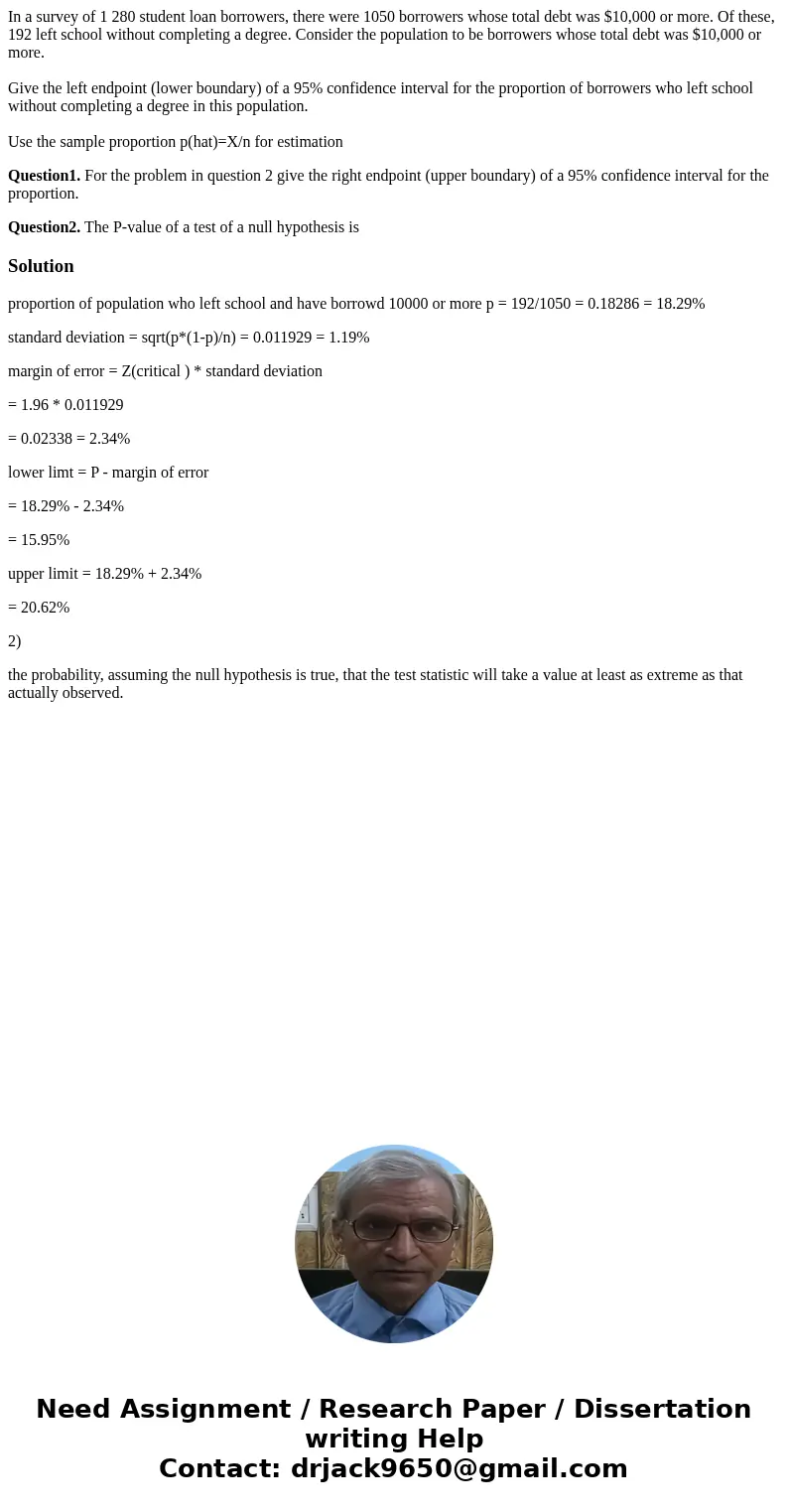In a survey of 1 280 student loan borrowers there were 1050
In a survey of 1 280 student loan borrowers, there were 1050 borrowers whose total debt was $10,000 or more. Of these, 192 left school without completing a degree. Consider the population to be borrowers whose total debt was $10,000 or more.
Give the left endpoint (lower boundary) of a 95% confidence interval for the proportion of borrowers who left school without completing a degree in this population.
Use the sample proportion p(hat)=X/n for estimation
Question1. For the problem in question 2 give the right endpoint (upper boundary) of a 95% confidence interval for the proportion.
Question2. The P-value of a test of a null hypothesis is
Solution
proportion of population who left school and have borrowd 10000 or more p = 192/1050 = 0.18286 = 18.29%
standard deviation = sqrt(p*(1-p)/n) = 0.011929 = 1.19%
margin of error = Z(critical ) * standard deviation
= 1.96 * 0.011929
= 0.02338 = 2.34%
lower limt = P - margin of error
= 18.29% - 2.34%
= 15.95%
upper limit = 18.29% + 2.34%
= 20.62%
2)
the probability, assuming the null hypothesis is true, that the test statistic will take a value at least as extreme as that actually observed.

 Homework Sourse
Homework Sourse